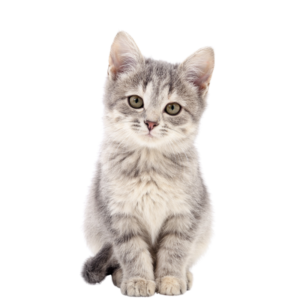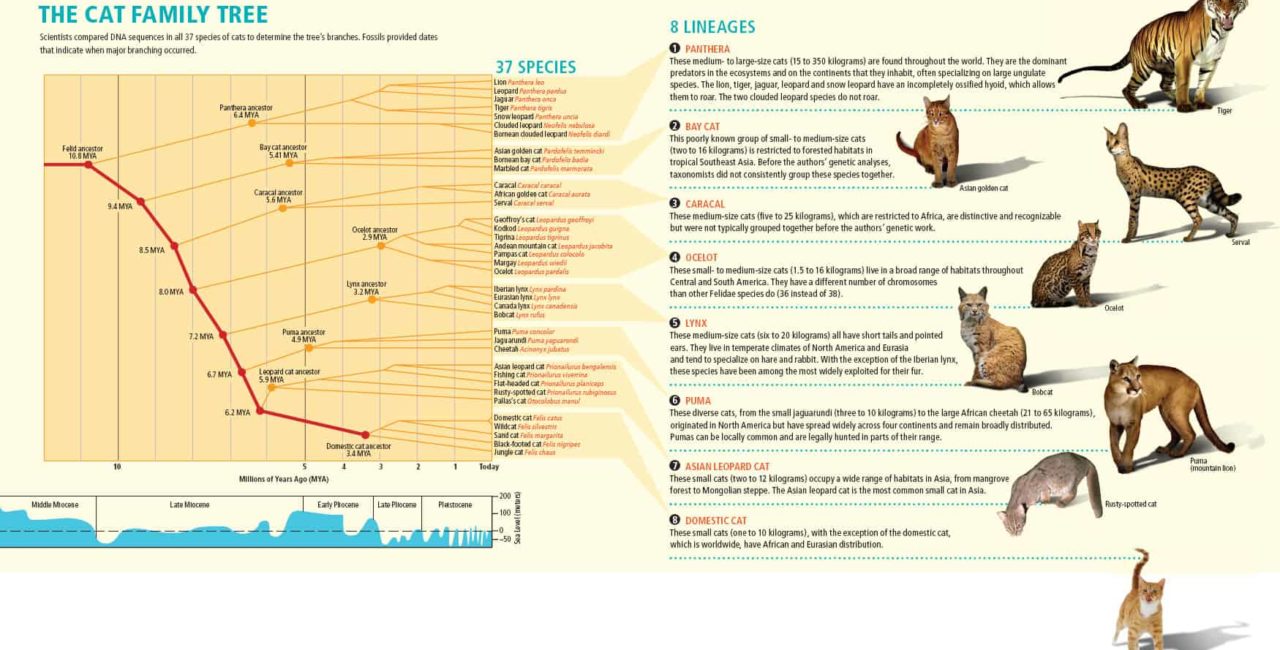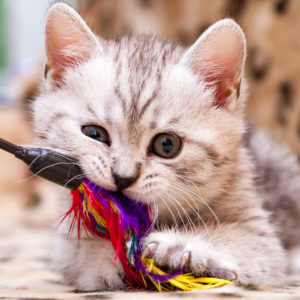The pantherlike ancestor to the cat family first appeared in Southeast Asia, about 10.8 million years ago. Prior to the use of DNA studies in cats, it was difficult to trace the Felidae family history, because feline fossils are rare, and difficult to tell apart.
In 1997, Warren E. Johnson and Stephen J. O’Brien performed DNA analyses of 37 living cat species, which allowed them to divide today’s cats into 8 lineages.
The great roaring cats (lions, leopards, jaguars, tigers) were the first to branch off, about 6.4 million years ago. The ancestor of modern domestic cats was the last to appear, about 3.4 million years ago. A small wildcat species was first domesticated in the Near East 8,000 to 10,000 years ago.
As sea levels rose and fell, cats migrated to new continents and developed new species. It is estimated that cats migrated to North America from Asia across the Bering land bridge connecting Siberia and Alaska about 9 million years ago. Later, several American cat lineages returned to Asia. With each migration, the cats evolved further and changed into an ever-growing array of sizes and types of felines. Based on the DNA and fossil evidence, the Johnnson-O’Brien team was able to demonstrate a series of at least 10 intercontinental migrations of cats over the past 10 million years, in which cat were able to colonize the world.
Written by Tiffany Lennox, DVM
References:
Scientific American 297, 68-75 (2007)




